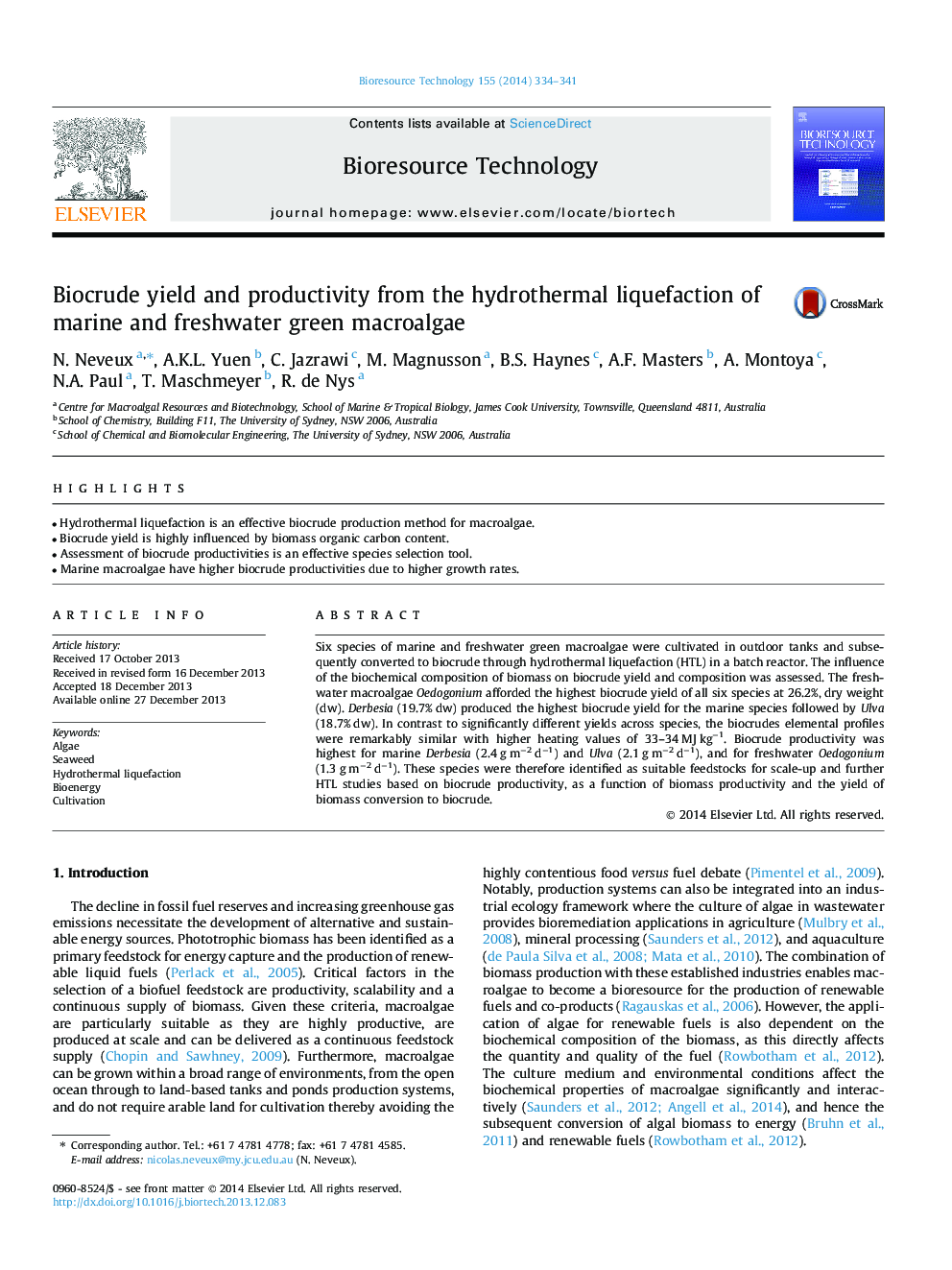| Article ID | Journal | Published Year | Pages | File Type |
|---|---|---|---|---|
| 681008 | Bioresource Technology | 2014 | 8 Pages |
•Hydrothermal liquefaction is an effective biocrude production method for macroalgae.•Biocrude yield is highly influenced by biomass organic carbon content.•Assessment of biocrude productivities is an effective species selection tool.•Marine macroalgae have higher biocrude productivities due to higher growth rates.
Six species of marine and freshwater green macroalgae were cultivated in outdoor tanks and subsequently converted to biocrude through hydrothermal liquefaction (HTL) in a batch reactor. The influence of the biochemical composition of biomass on biocrude yield and composition was assessed. The freshwater macroalgae Oedogonium afforded the highest biocrude yield of all six species at 26.2%, dry weight (dw). Derbesia (19.7% dw) produced the highest biocrude yield for the marine species followed by Ulva (18.7% dw). In contrast to significantly different yields across species, the biocrudes elemental profiles were remarkably similar with higher heating values of 33–34 MJ kg−1. Biocrude productivity was highest for marine Derbesia (2.4 g m−2 d−1) and Ulva (2.1 g m−2 d−1), and for freshwater Oedogonium (1.3 g m−2 d−1). These species were therefore identified as suitable feedstocks for scale-up and further HTL studies based on biocrude productivity, as a function of biomass productivity and the yield of biomass conversion to biocrude.
